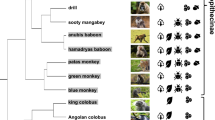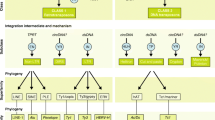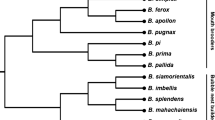Abstract
Marine mammals are exposed to the oxidative stress induced by hypoxia/reoxygenation cycles yet resist cellular damage. The availability of high-quality genomes promises to provide insights on how this is achieved. In this study, we considered the ubiquitin-conjugating enzymes (E2) gene family, UBE2 genes, which encodes enzymes with critical roles in cellular physiology, including the oxidative stress response. The sperm whale was the first marine mammal with a chromosome-level genome, allowing the study of gene family repertories, phylogenetic relationships, chromosome gene organization, and other evolutionary patterns on a genomewide basis. Here, 39 UBE2 genes (similar to human, including 32 intact genes, one partial gene, six pseudogenes) were identified in sperm whale genome. These genes were found on 17 chromosomes and were assigned into 23 subfamilies, 16 subgroups, and four classes based on structural characteristics and functions, phylogeny and conserved domains, respectively. Although the gene structure and motif distribution of sperm whale UBE2 genes are conserved in each subfamily, motif variation and intron gain/loss may contribute to functional divergence. Segmental duplications were detected in six gene pairs, which could drive UBE2 gene innovation in the sperm whale. Contrasting seven cetaceans and five terrestrial taxa, we found that cetaceans have experienced shifts in selective constraint on UBE2 genes, which may contribute to oxidative stress tolerance during the adaptation to aquatic life. Our results provide the first comprehensive survey of cetacean UBE2 genes.






Similar content being viewed by others
References
Allen K. N. and Vázquez-Medina J. P. 2019 Natural tolerance to ischemia and hypoxemia in diving mammals: a review. Front. Physiol. 10, 1199.
Bailey J. A., Yavor A. M., Massa H. F., Trask B. J. and Eichler E. E. 2001 Segmental duplications: organization and impact within the current human genome project assembly. Genome Res. 11, 1005–1017.
Bailey T. L., Boden M., Buske F. A., Frith M., Grant C. E., Clementi L. et al. 2009 MEME SUITE: tools for motif discovery and searching. Nucleic Acids Res. 37, W202–W208.
Costa M. P., Oliveira V. F., Pereira R. V., De Abreu F. C., Jannotti-Passos L. K., Borges W. C. et al. 2015 In silico analysis and developmental expression of ubiquitin-conjugating enzymes in Schistosoma mansoni. Parasitol. Res. 114, 1769–1777.
Cottee P. A., El-Osta Y. G. A., Nisbet A. J. and Gasser R. B. 2006 Ubiquitin-conjugating enzyme genes in Oesophagostomum dentatum. Parasitol. Res. 99, 119–125.
Del Águila-Vargas A. C., Vázquez-Medina J. P., Crocker D. E., Méndez-Rodríguez L. C., Gaxiola-Robles R., de Anda-Montanez J. A. et al. 2020 Antioxidant response to cadmium exposure in primary skeletal muscle cells isolated from humans and elephant seals. Comp. Biochem. Physiol. Part C: Toxicol. Pharmacol. 227, 108641.
Del Castillo Velasco-Martínez I., Hernández-Camacho C. J., Méndez-Rodríguez L. C. and Zenteno-Savín T. 2016 Purine metabolism in response to hypoxic conditions associated with breath-hold diving and exercise in erythrocytes and plasma from bottlenose dolphins (Tursiops truncatus). Comp. Biochem. Physiol. Part A: Mol. Integ. Physiol. 191, 196–201.
Doris K. S., Rumsby E. L. and Morgan B. A. 2012 Oxidative stress responses involve oxidation of a conserved ubiquitin pathway enzyme. Mol. Cell. Biol. 32, 4472–4481.
El-Gebali S., Mistry J., Bateman A., Eddy S. R., Luciani A., Potter S. C. et al. 2019 The Pfam protein families database in 2019. Nucleic Acids Res. 47, D427–D432.
Fan G., Zhang Y., Liu X., Wang J., Sun Z., Sun S. et al. 2019 The first chromosome-level genome for a marine mammal as a resource to study ecology and evolution. Mol. Ecol. Resour. 19, 944–956.
Frugoli J. A., Mcpeek M. A., Thomas T. L. and Mcclung C. R. 1998 Intron loss and gain during evolution of the catalase gene family in angiosperms. Genetics 149, 355–365.
Gasteiger E., Hoogland C., Gattiker A., Wilkins M. R., Appel R. D., Hochstrasser D. F. et al. 2005 Protein identification and analysis tools on the ExPASy server. In The proteomics protocols handbook, pp. 571–607. Springer.
Haas A. L. and Siepmann T. J. 1997 Pathways of ubiquitin conjugation. FASEB J. 11, 1257–1268.
Hu B., Jin J., Guo A.-Y., Zhang H., Luo J. and Gao G. 2014 GSDS 2.0: an upgraded gene feature visualization server. Bioinformatics 31, 1296–1297.
Jeffares D. C., Mourier T. and Penny D. 2006 The biology of intron gain and loss. Trends Genet. 22, 16–22.
Jeong E. I., Chung H. W., Lee W. J., Kim S.-H., Kim H., Choi S. G. et al. 2016 E2–25K SUMOylation inhibits proteasome for cell death during cerebral ischemia/reperfusion. Cell Death Dis. 7, e2573.
Jones D., Crowe E., Stevens T. A. and Candido E. P. M. 2001 Functional and phylogenetic analysis of the ubiquitylation system in Caenorhabditis elegans: ubiquitin-conjugating enzymes, ubiquitin-activating enzymes, and ubiquitin-like proteins. Genome Biol. 3(research0002), 0001.
Kalyaanamoorthy S., Minh B. Q., Wong T. K., Von Haeseler A. and Jermiin L. S. 2017 ModelFinder: fast model selection for accurate phylogenetic estimates. Nat. Methods 14, 587–589.
Krzywinski M., Schein J., Birol I., Connors J., Gascoyne R., Horsman D. et al. 2009 Circos: an information aesthetic for comparative genomics. Genome Res. 19, 1639–1645.
Kumar S., Stecher G., Li M., Knyaz C. and Tamura K. 2018 MEGA X: molecular evolutionary genetics analysis across computing platforms. Mol. Biol. Evol. 35, 1547–1549.
Laine A., Topisirovic I., Zhai D., Reed J. C., Borden K. L. and Ronai Z. E. 2006 Regulation of p53 localization and activity by Ubc13. Mol. Cell. Biol. 26, 8901–8913.
Letunic I. and Bork P. 2019 Interactive Tree Of Life (iTOL) v4: recent updates and new developments. Nucleic Acids Res. 47, W256–W259.
López-Cruz R. I., Pérez-Milicua M. B., Crocker D. E., Gaxiola-Robles R., Bernal-Vertiz J. A., Rosa A. et al. 2014 Purine nucleoside phosphorylase and xanthine oxidase activities in erythrocytes and plasma from marine, semiaquatic and terrestrial mammals. Comp. Biochem. Physiol. Part a: Mol. Integ. Physiol. 171, 31–35.
Lu S., Wang J., Chitsaz F., Derbyshire M. K., Geer R. C., Gonzales N. R. et al. 2020 CDD/SPARCLE: the conserved domain database in 2020. Nucleic Acids Res. 48, D265–D268.
Ma K., Ryan P., Klevit R. and Lipkowitz S. 2016 Ube2d family members, Ube2e family members and Ube2w modulate the ubiquitination and degradation of EGFR by Cbl, pp. AACR.
Mcgowen M. R., Tsagkogeorga G., Álvarez-Carretero S., Dos Reis M., Struebig M., Deaville R. et al. 2019 Phylogenomic resolution of the cetacean tree of life using target sequence capture. Syst. Biol. 69, 479–501.
Michelle C. and Vourc’h P., Mignon L. and Andres C. R. 2009 What was the set of ubiquitin and ubiquitin-like conjugating enzymes in the eukaryote common ancestor? J. Mol. Evol. 68, 616–628.
Nei M. and Rooney A. P. 2005 Concerted and birth-and-death evolution of multigene families. Annu. Rev. Genet. 39, 121–152.
Nguyen L.-T., Schmidt H. A., Von Haeseler A. and Minh B. Q. 2015 IQ-TREE: a fast and effective stochastic algorithm for estimating maximum-likelihood phylogenies. Mol. Biol. Evol. 32, 268–274.
Plafker K. S., Nguyen L., Barneche M., Mirza S., Crawford D. and Plafker S. M. 2010 The ubiquitin-conjugating enzyme UbcM2 can regulate the stability and activity of the antioxidant transcription factor Nrf2. J. Biol. Chem. 285, 23064–23074.
Reuter S., Gupta S. C., Chaturvedi M. M. and Aggarwal B. B. 2010 Oxidative stress, inflammation, and cancer: how are they linked? Free Radic. Biol. Med. 49, 1603–1616.
Samonte R. V. and Eichler E. E. 2002 Segmental duplications and the evolution of the primate genome. Nat. Rev. Genet. 3, 65–72.
Scaglione K. M., Basrur V., Ashraf N. S., Konen J. R., Elenitoba-Johnson K. S., Todi S. V. and Paulson H. L. 2013 The ubiquitin-conjugating enzyme (E2) Ube2w ubiquitinates the N terminus of substrates. J. Biol. Chem. 288, 18784–18788.
Schultz J., Milpetz F., Bork P. and Ponting C. P. 1998 SMART, a simple modular architecture research tool: identification of signaling domains. Proc. Natl. Acad. Sci. USA 95, 5857–5864.
Scornavacca C., Belkhir K., Lopez J., Dernat R., Delsuc F., Douzery E. J. and Ranwez V. 2019 OrthoMaM v10: scaling-up orthologous coding sequence and exon alignments with more than one hundred mammalian genomes. Mol. Biol. Evol. 36, 861–862.
Sela N., Kim E. and Ast G. 2010 The role of transposable elements in the evolution of non-mammalian vertebrates and invertebrates. Genome Biol. 11, R59.
Shang F. and Taylor A. 2011 Ubiquitin–proteasome pathway and cellular responses to oxidative stress. Free Radic. Biol. Med. 51, 5–16.
Stewart M. D., Ritterhoff T., Klevit R. E. and Brzovic P. S. 2016 E2 enzymes: more than just middle men. Cell Res. 26, 423–440.
Swanson W. J., Nielsen R. and Yang Q. 2003 Pervasive adaptive evolution in mammalian fertilization proteins. Mol. Biol. Evol. 20, 18–20.
Talavera G. and Castresana J. 2007 Improvement of phylogenies after removing divergent and ambiguously aligned blocks from protein sequence alignments. Syst. Biol. 56, 564–577.
Tian R., Seim I., Ren W., Xu S. and Yang G. 2019 Contraction of the ROS scavenging enzyme glutathione S-transferase gene family in cetaceans. G3: Genes. Genomes, Genet. 9, 2303–2315.
Tian R., Wang Z., Niu X., Zhou K., Xu S. and Yang G. 2016 Evolutionary genetics of hypoxia tolerance in cetaceans during diving. Genome Biol. Evol. 8, 827–839.
Van Wijk S. J. and Timmers H. M. 2010 The family of ubiquitin-conjugating enzymes (E2s): deciding between life and death of proteins. FASEB J. 24, 981–993.
Vázquez-Medina J. P., Zenteno-Savín T., Elsner R. and Ortiz R. M. 2012 Coping with physiological oxidative stress: a review of antioxidant strategies in seals. J. Comp. Physiol. B 182, 741–750.
Vittal V., Shi L., Wenzel D. M., Scaglione K. M., Duncan E. D., Basrur V. et al. 2015 Intrinsic disorder drives N-terminal ubiquitination by Ube2w. Nat. Chem. Biol. 11, 83.
Voorrips R. 2002 MapChart: software for the graphical presentation of linkage maps and QTLs. J. Hered. 93, 77–78.
Wang D., Zhang Y., Zhang Z., Zhu J. and Yu J. 2010 KaKs_Calculator 2.0: a toolkit incorporating gamma-series methods and sliding window strategies. Genom. Proteom. Bioinform. 8, 77–80.
Wang Y., Tang H., Debarry J. D., Tan X., Li J., Wang X. et al. 2012 MCScanX: a toolkit for detection and evolutionary analysis of gene synteny and collinearity. Nucleic Acids Res. 40, e49–e49.
Watwood S. L., Miller P. J., Johnson M., Madsen P. T. and Tyack P. L. 2006 Deep-diving foraging behaviour of sperm whales (Physeter macrocephalus). J. Anim. Ecol. 75, 814–825.
Wilhelm Filho D., Sell F., Ribeiro L., Ghislandi M., Carrasquedo F., Fraga C. G. et al. 2002 Comparison between the antioxidant status of terrestrial and diving mammals. Comp. Biochem. Physiol. Part a: Mol. Integr. Physiol. 133, 885–892.
Wu P. Y., Hanlon M., Eddins M., Tsui C., Rogers R. S., Jensen J. P. et al. 2003 A conserved catalytic residue in the ubiquitin-conjugating enzyme family. EMBO J. 22, 5241–5250.
Yang Z. 1998 Likelihood ratio tests for detecting positive selection and application to primate lysozyme evolution. Mol. Biol. Evol. 15, 568–573.
Yang Z. 2007 PAML 4: phylogenetic analysis by maximum likelihood. Mol. Biol. Evol. 24, 1586–1591.
Yim H. S., Cho Y. S., Guang X., Kang S. G., Jeong J. Y., Cha S. S. et al. 2014 Minke whale genome and aquatic adaptation in cetaceans. Nat. Genet. 46, 88–92.
Yu C. S., Chen Y. C., Lu C. H. and Hwang J. K. 2006 Prediction of protein subcellular localization. Proteins: Struct. Funct. Bioinform. 64, 643–651.
Acknowledgements
This work was financially supported by the Key Project of the National Natural Science Foundation of China (NSFC) (no. 31630071, 32030011), the National Natural Science Foundation of China (NSFC) (no. 31900310; 31950410545), the Priority Academic Program Development of Jiangsu Higher Education Institutions (PAPD).
Author information
Authors and Affiliations
Corresponding authors
Additional information
Corresponding editor: Punyasloke Bhadury
Supplementary Information
Below is the link to the electronic supplementary material.
Rights and permissions
About this article
Cite this article
Tian, R., Yang, C., Geng, Y. et al. Genomewide analysis of sperm whale E2 ubiquitin conjugating enzyme genes. J Genet 100, 78 (2021). https://doi.org/10.1007/s12041-021-01333-y
Received:
Revised:
Accepted:
Published:
DOI: https://doi.org/10.1007/s12041-021-01333-y




